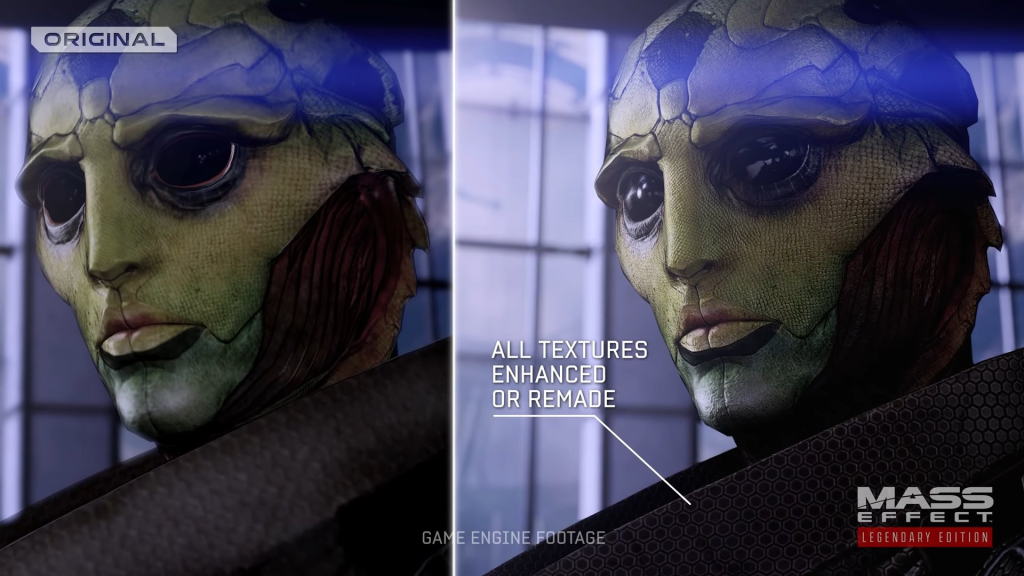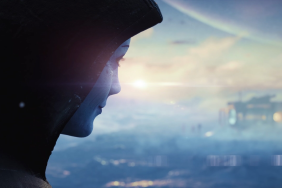Mass Effect Legendary Edition is just over the horizon, bringing the full original trilogy remastered to modern consoles next month. Ahead of its release, BioWare and EA are showing off the extensive visual improvements that have been made over the originals with a brand new “Remastered Comparison Trailer” that puts scenes from the Legendary Edition side by side with the same scenes from the original trilogy.
Alongside the trailer, BioWare released an extensive blog detailing their process for remastering the original Mass Effect games. They likened a final release of a game to a house of cards, and even “blowing the dust off, let alone implementing foundational changes like updating the version of the engine” can cause a wide variety of issues to happen, which is why it’s not as easy a process as just slapping a fresh coat of paint on it.
Their three-step approach began with building a foundation by cataloging every single asset in the trilogy.
How many particle effects, 3D models, textures, levels, GUI (Graphical User Interface) elements, sounds, cinematic movies, etc. actually exist across the trilogy, and on average what are their quality levels? Do the source assets (content creation files) still exist? What percentage of those assets should we improve, and on average, how long will each asset type take to improve? Knowing the sheer numbers of assets and their quality levels shaped our strategy for improving each “type” of asset.
The jump from native 720p (upscaled to 1080p) to machines that can run 4K resolutions was a particular challenge, because it meant remastering or redoing “well over” 30,000 textures originally meant for a much lower resolution.
The second step was the overall modernization of the games, specifically starting with the original Mass Effect, which needed the most work to bring it in line with the rest of the games. The team used improved assets from the latter games and DLCs, improved on those, and then ported them across the entire trilogy. Notably however, they didn’t want this to introduce any continuity issues regarding the passage of time across all three games, so minor changes were made to each game’s character models to maintain age and effects of things like rocket blasts (poor Garrus).
For characters who appeared in all three games, like Liara, Garrus, Kaiden, Captain Anderson, and more, we maintained slight changes throughout the trilogy as they aged, matured, or…got hit by a rocket. Obviously, we couldn’t let uniforms branded with “SR2” sneak their way back onto the crew of the Normandy SR1, and we still liked how the Alliance Admiralty uniforms became more militarized and sleek as the trilogy progressed, so we improved each version of those outfits individually.
One of their main goals for texture and asset improvements was in “increasing the sense of realism in the surface response,” which is how different surfaces play with light. They also improved the way each mesh worked with each object to reduce odd stretching or other visual issues that could have come with improving the textures but leaving the old skinning. It also involved improving or creating new particle effects and lighting, redoing much of the UI to support higher resolutions, and re-rendering cutscenes in 4K so they don’t stick out awkwardly like in most remastered games. This was also the stage where things like reframing certain posterior shots happened.
Environment artists also made a number of small changes to the trilogy’s levels to visually enhance each of them in meaningful ways. “This included adding props to exceptionally barren areas, remaking low-resolution or stretched textures, smoothing out jagged 3D assets, and modernizing shaders on surfaces with poor lighting response.” And finally, post-production effects were improved to bring a higher-quality look and more consistency across the three games. It will also have real-time-reflections.
And finally, beyond just updating the visuals of the game, BioWare started examining ways that they could make improvements to how the game plays. Again, notably this was in the “significant quality jump between the first two games,” and a desire to make the first game a bit more in line with the other two. A big part of this was revisiting original concept art for levels and comparing them to what shipped in order to better realize the original vision. This is also where quality of life and gameplay changes were made.
What this all results in is “a balance between making meaningful enhancements while retaining the same atmosphere and feel of the original releases.” For a more intensive deep-dive into BioWare’s remastering process, it’s well-worth reading their full post to see just how much work it takes.
Mass Effect Legendary Edition releases May 14th, 2021 for PS4, Xbox One, and PC. It will be playable on PS5 and Xbox Series X|S via backwards compatibility.









